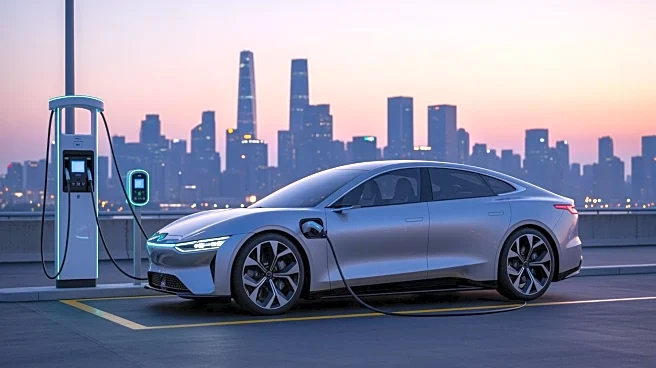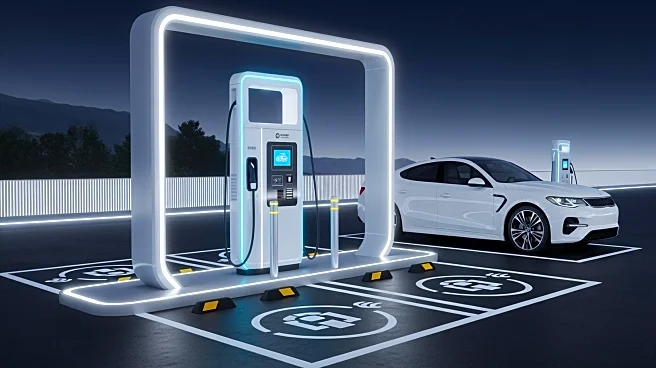What's Happening?
Mahindra & Mahindra Ltd (M&M) has announced a 28% increase in its consolidated net profit for the quarter ending September 30, reaching ₹3,673 crore. This growth is attributed to strong sales in the SUV
segment and continued leadership in key commercial vehicle markets. The company's overall consolidated revenue rose by 22% year-on-year to ₹46,106 crore. The automotive business revenue specifically increased by 25% to ₹27,171 crore, with profit before interest and tax (PBIT) growing by 22% to ₹2,538 crore. The standalone automotive PBIT margin improved by 80 basis points to 10.3%, reflecting enhanced operating efficiency and a favorable product mix. M&M has strengthened its position in the SUV market, achieving a 25.7% revenue market share, an increase of 390 basis points from the previous year, driven by demand for models like the Scorpio-N, XUV700, and Thar.
Why It's Important?
The significant profit increase for Mahindra & Mahindra highlights the growing demand for SUVs and the company's strategic positioning in the automotive market. This development is crucial for the U.S. automotive industry as it underscores the global trend towards SUVs, which could influence market dynamics and consumer preferences. M&M's success in the SUV segment and its leadership in light commercial vehicles and electric three-wheelers demonstrate the company's robust market strategy and potential for future growth. This could lead to increased competition among global automakers, prompting them to innovate and expand their SUV offerings to capture market share.
What's Next?
Mahindra & Mahindra plans to continue its growth trajectory with upcoming vehicle launches and expansion in the electric vehicle (EV) sector. The company's focus on EVs aligns with global trends towards sustainable transportation solutions. As M&M strengthens its market position, other automakers may respond by accelerating their own EV and SUV development strategies to remain competitive. The company's future performance will likely be closely watched by industry analysts and investors, as it could set benchmarks for profitability and market share in the automotive sector.











